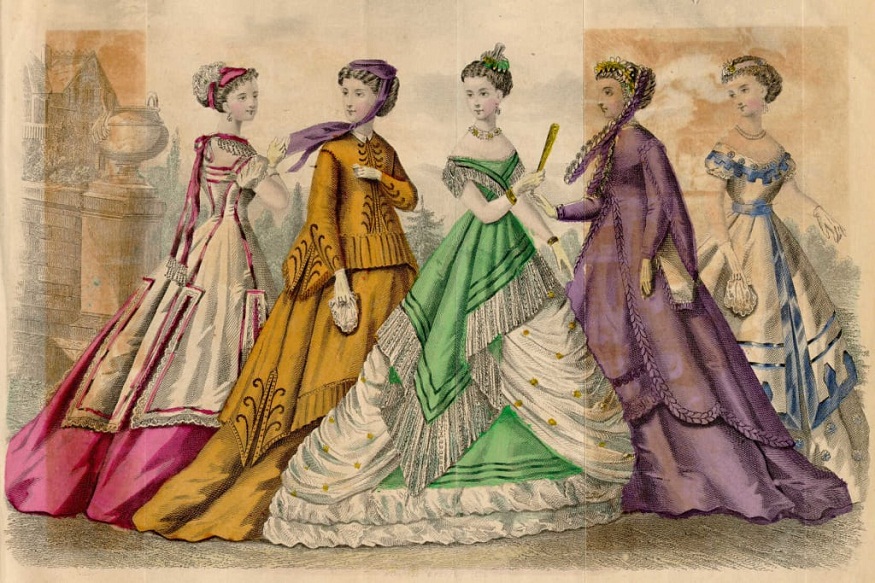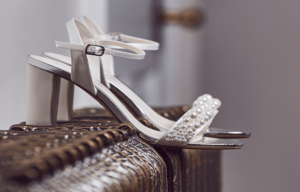Construction is the foundation of fashion design. This is how you turn your sketch ideas into a wearable and functional garment.
Sewing, pattern making and the art of draping fabrics are at the heart of the curriculum at fashion design schools, but you can also learn these skills outside of an establishment. You can take sewing classes, learn on YouTube, and other online courses at your own pace.
History of fashion
The study of the evolution of fashion design and haute couture is rich in lessons. The fashion trends you see today are inspired by looks from the past. Studying master fashion designers and past trends can help you find inspiration for your work.
Open design books, watch documentaries, follow fashion week and read biographies of your favorite icons. If you are truly passionate about a career in fashion design, you may find it easy to develop this skill.
Learn your textiles
Knowing which textiles to use to bring your sketches to life is a skill set that you will develop with experience of the creative process, working closely with fabrics and drapes.
Learning what materials to work with and how they drape on the body is an important factor to consider when designing a garment.
Fashion Marketing and Merchandising
Most clothing is created for the mass market. Marketing and merchandising are heavily emphasized in fashion design programs, but you can learn them as you progress in the industry.
Merchandising manages the flow of goods (clothing and accessories) to retailers, while marketing primarily focuses on branding and advertising to target consumers.
Do fashion designers make a lot of money?
The fashion industry is one of the largest global industries, which means there is also a wide range of salaries for fashion stylists.
Newly graduated students or those new to the sector can start with an internship. If you’re lucky, you may find a paid internship. Either way, it’s a great way to get your foot in the door in the industry and navigate the different fashion sectors to see where you enjoy working the most.
Selon la En effet The lowest and highest 10% salary range for fashion stylists is between $32,320 and $130,900 per year. These average salaries may vary depending on your location. Most companies hiring fashion stylists in the United States are located in California and New York.
fashion design measurement
When you apply for a job as a fashion stylist, you will be asked to submit a portfolio. This allows the hiring manager or potential client to get a feel for your style and the results you can produce for them.
Traditionally, you had to present a portfolio on paper during your interviews. Aujourd’hui, sites web de portfolio are becoming more common because they are easier to share and update and provide you with more opportunities to market yourself and brand yourself as a creative professional.
How to create a portfolio website for fashion design?
Fashion design school gives you a huge advantage because you are guided through projects that you can add to your portfolio once you graduate.
But just because you haven’t studied fashion design doesn’t mean you can’t build a portfolio. You can create mood boards, fashion illustrations or, if you’ve made clothes, organize a professional photo shoot.
Here are some tips for getting started creating a portfolio website for a career in fashion design.
Focus on quality, not quantity
A portfolio is about putting your best face forward, not about your entire fashion design journey.
Think about the type of work you’re looking for and tailor your portfolio to the brands you’re applying to. Only share relevant work that you think the hiring manager might be interested in, or create new pieces specifically for that position.
Include your process
Make your portfolio more interesting to viewers by sharing your ideation process for the design. While the finished product may be remarkable, it’s no secret that the fashion industry is notorious for stolen ideas.
Adding context about how you came up with the design, perspective, and originality can help you stand out from other applicants.
An “About” page tells interested brands your story in the fashion industry. Try not to make it too much about yourself – keep it concise and to the point.
You can explain how you got into the industry, what your experience is, and how you envision your career. Visitors to your portfolio will then have a better idea of what working with you would be like.
Informations sur le contact
How can visitors to your website contact you about your work? Don’t forget to add a section or, better yet, a page to your portfolio on how a brand can contact you.



Be First to Comment